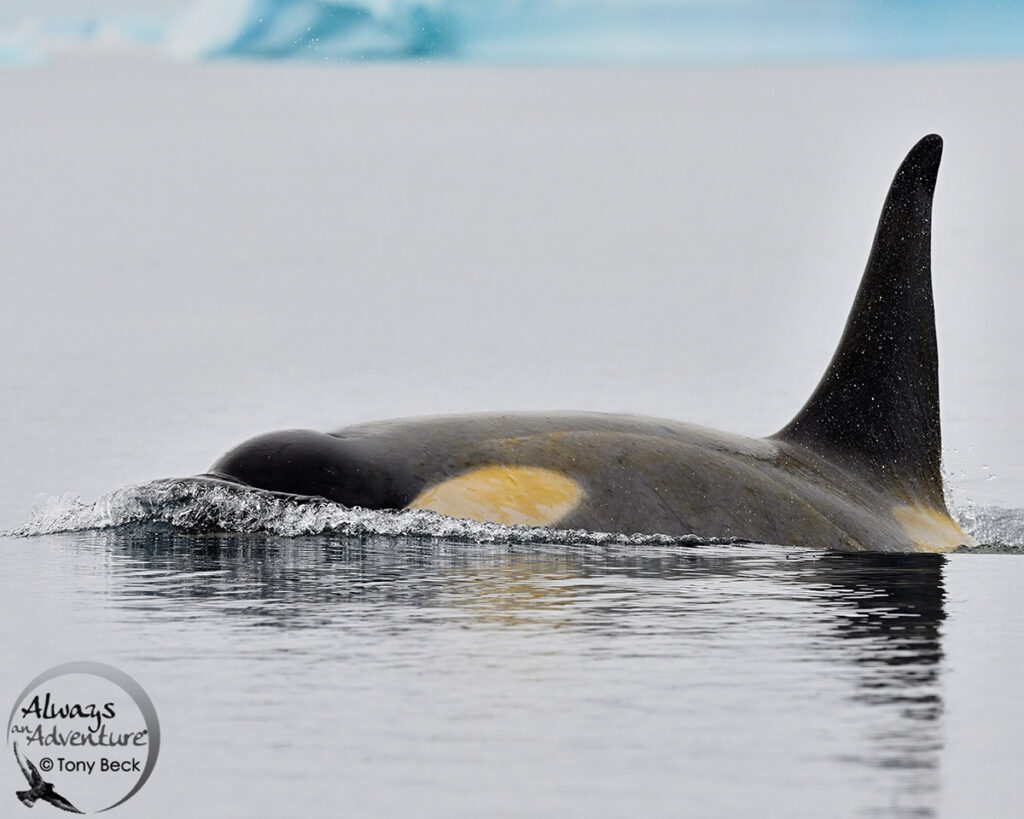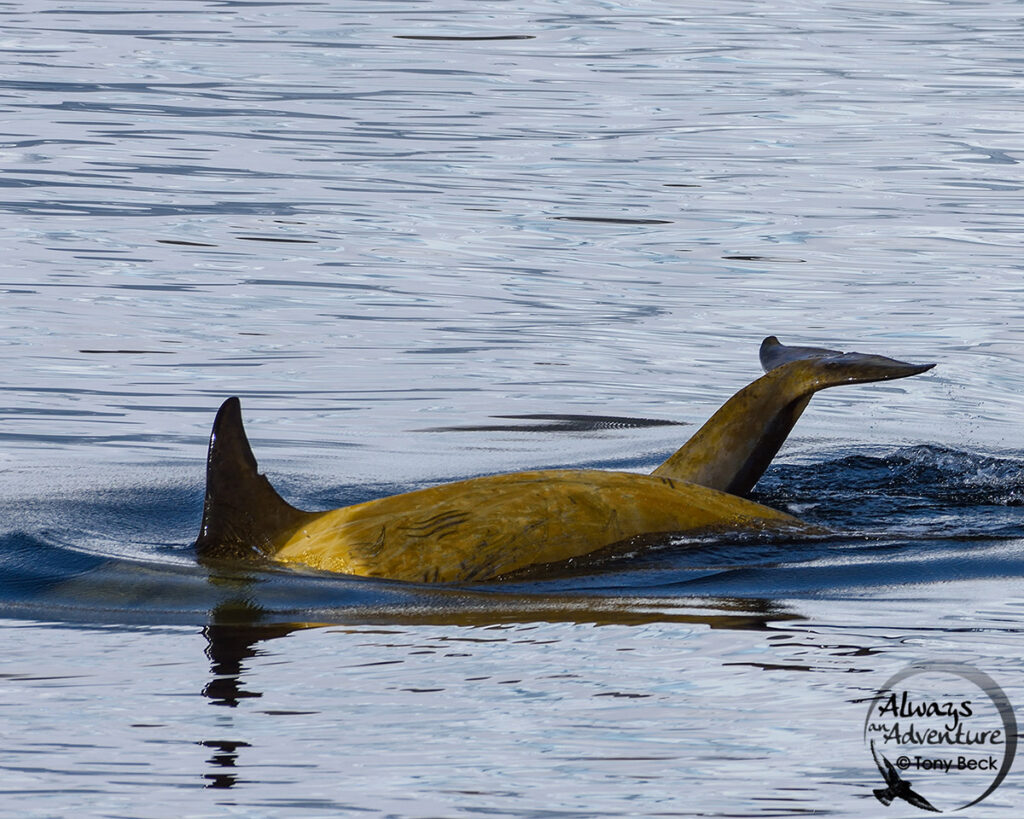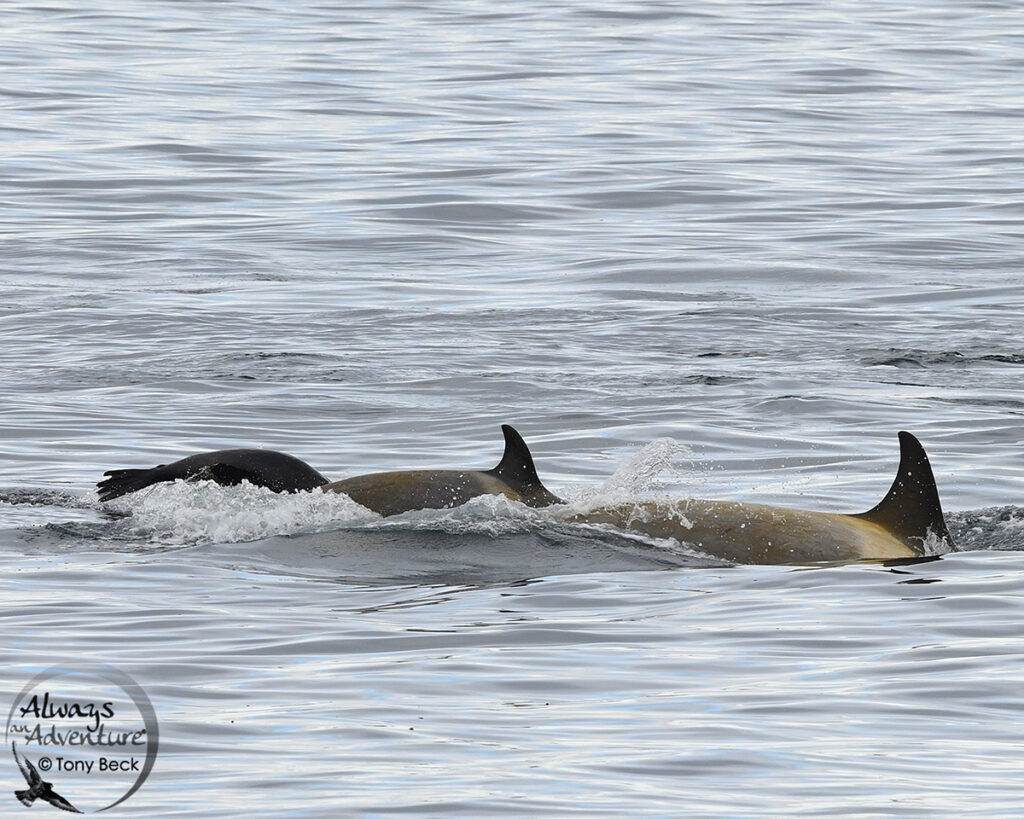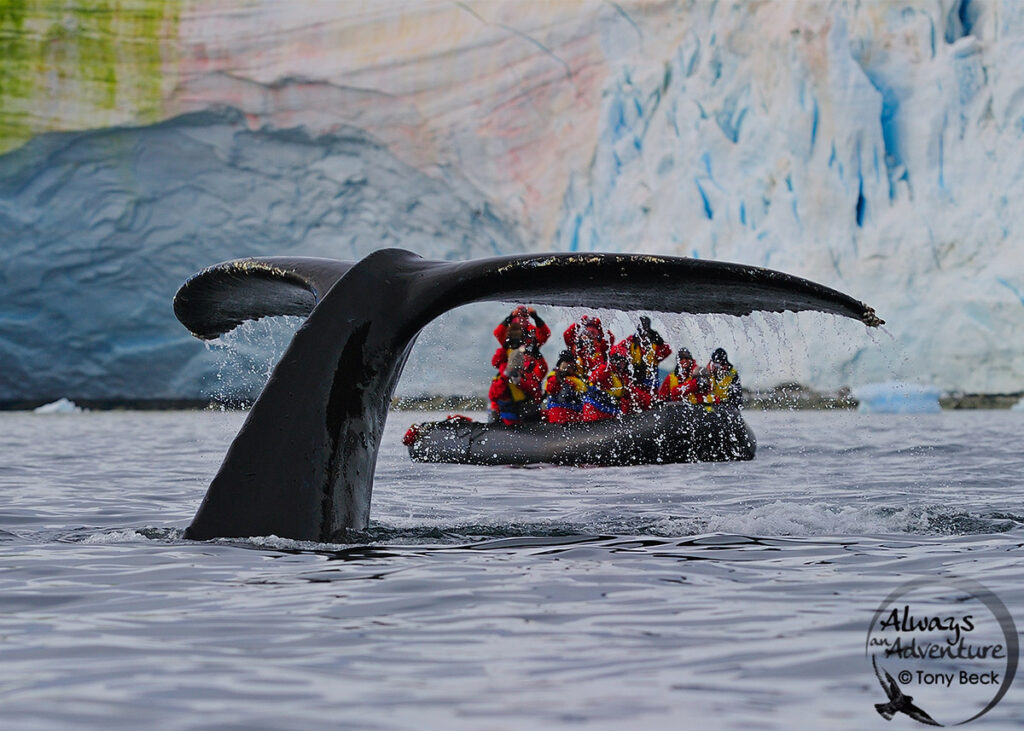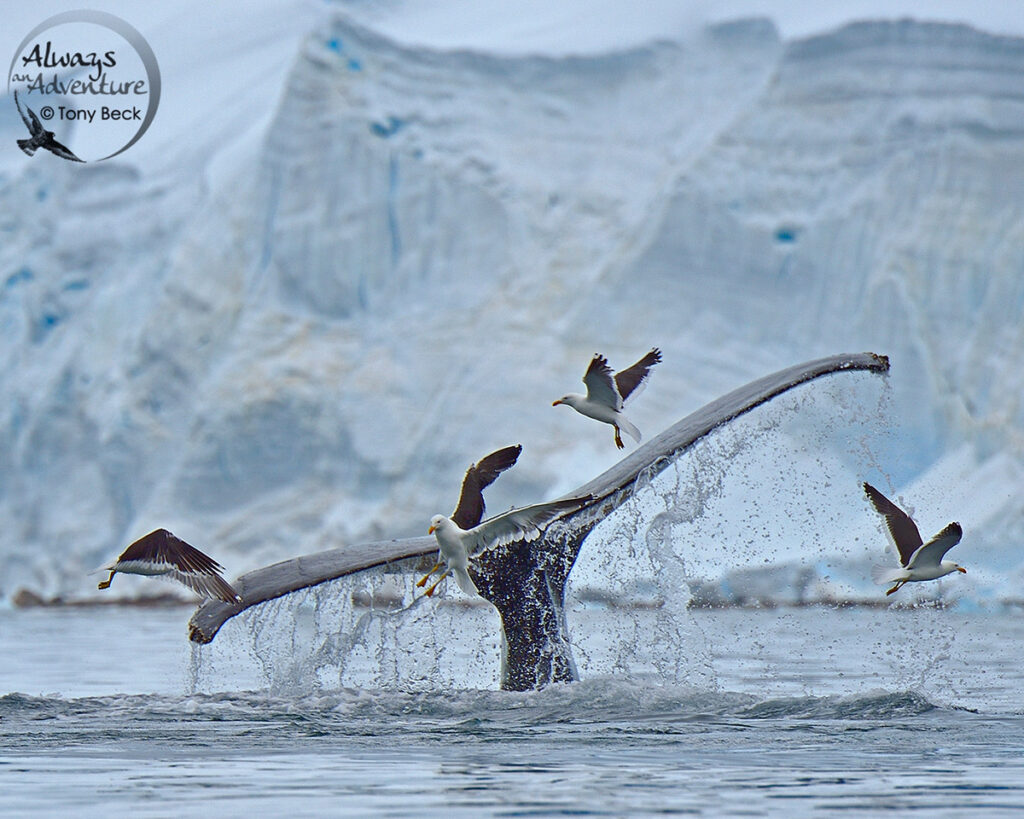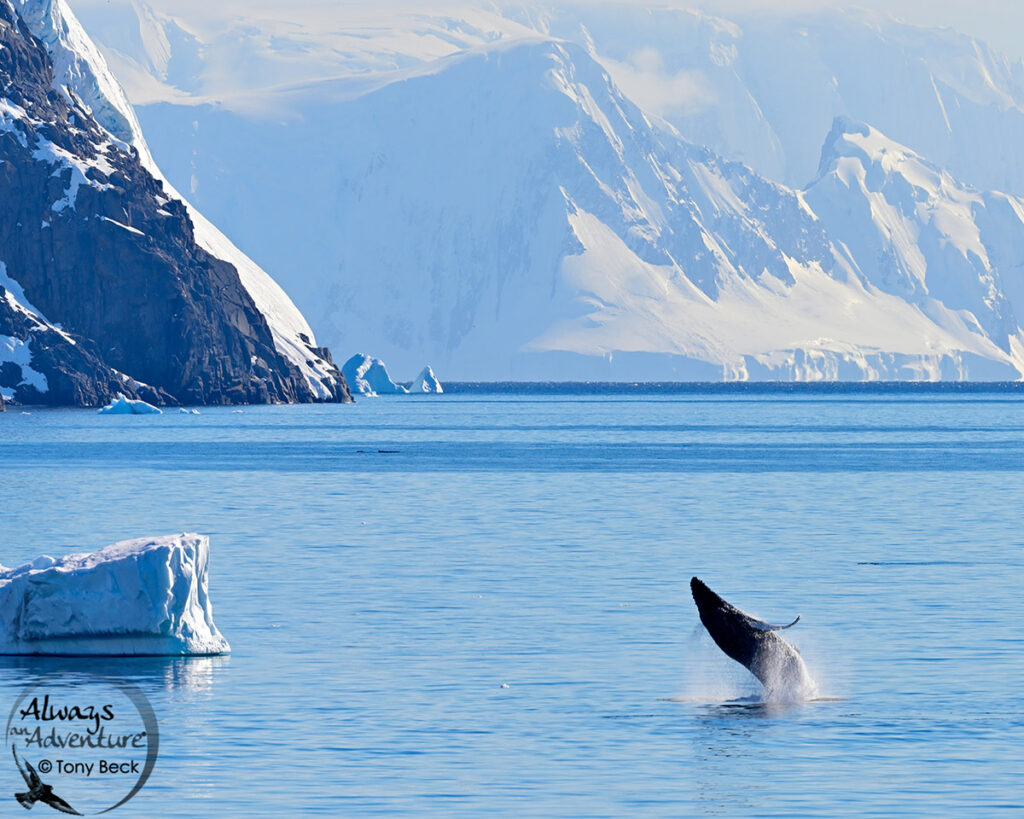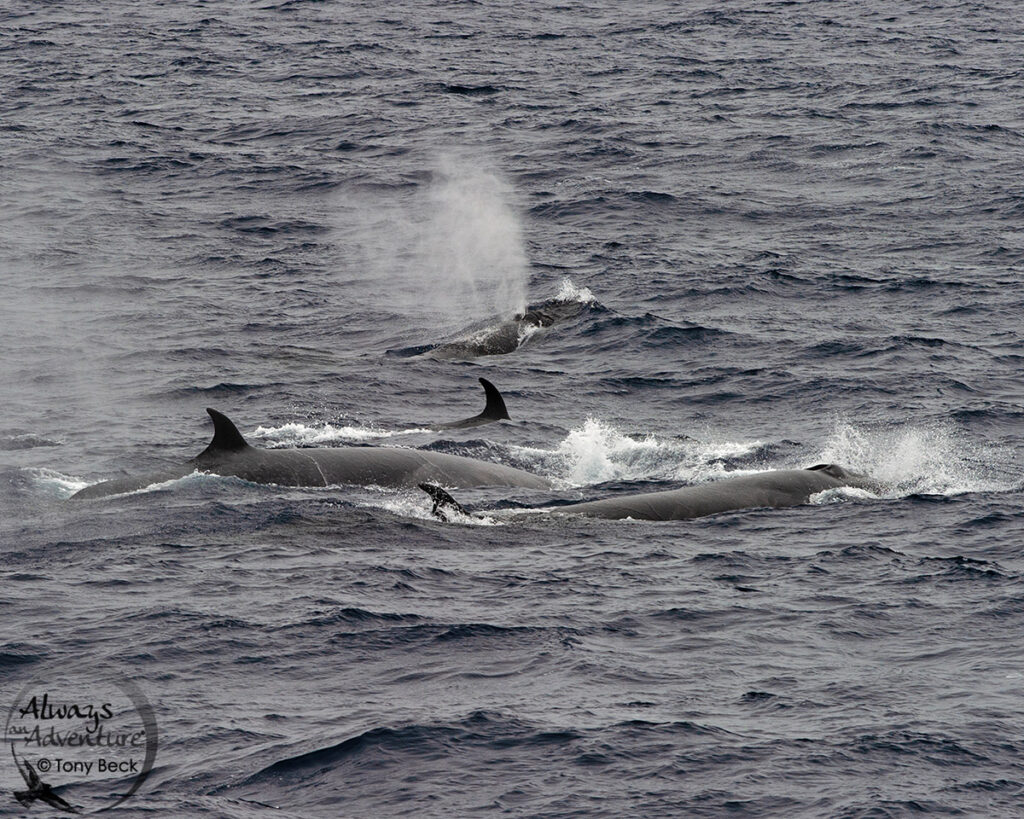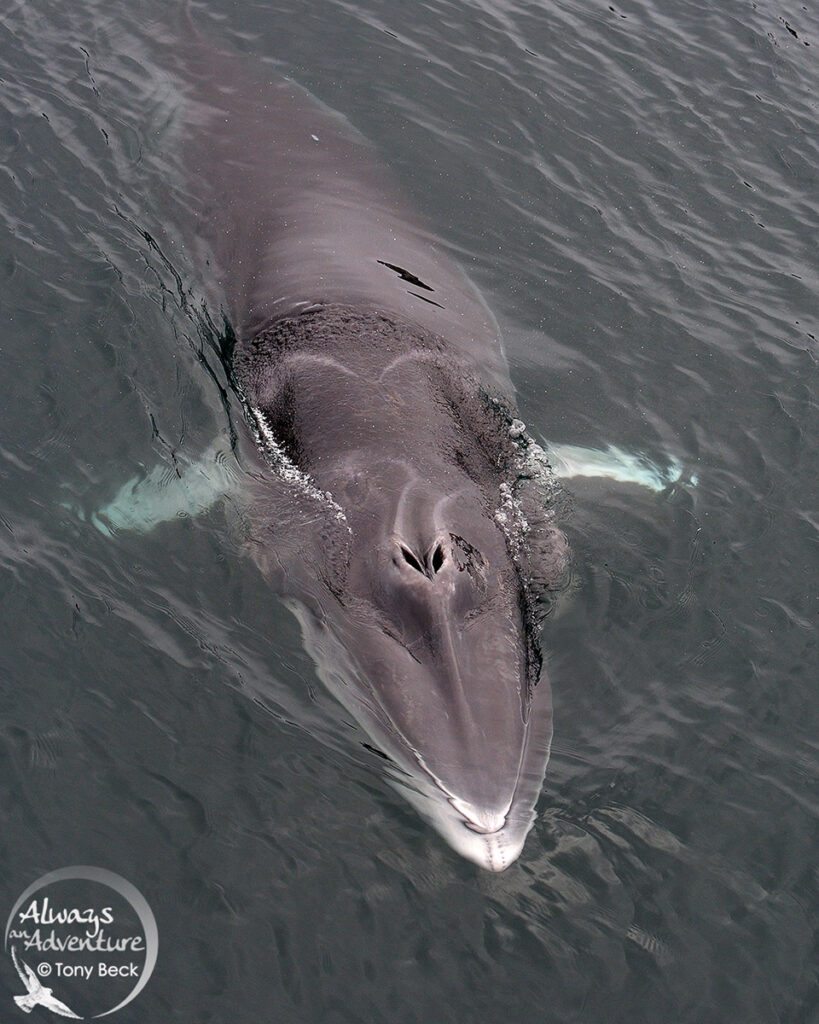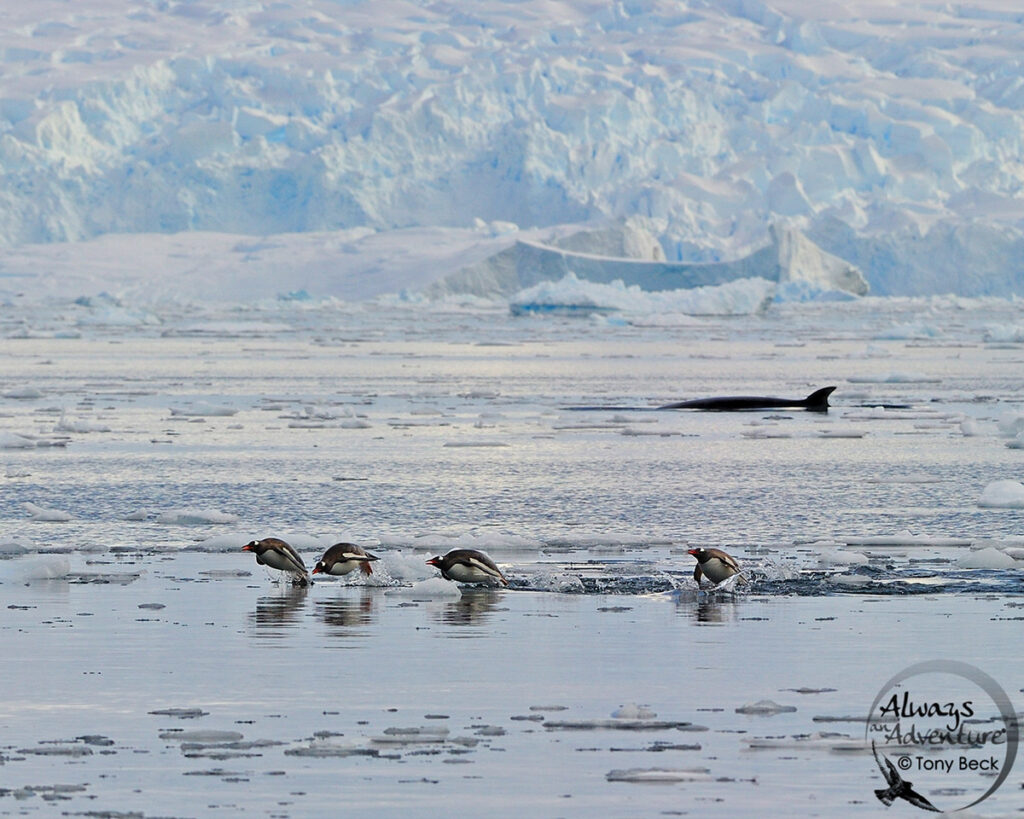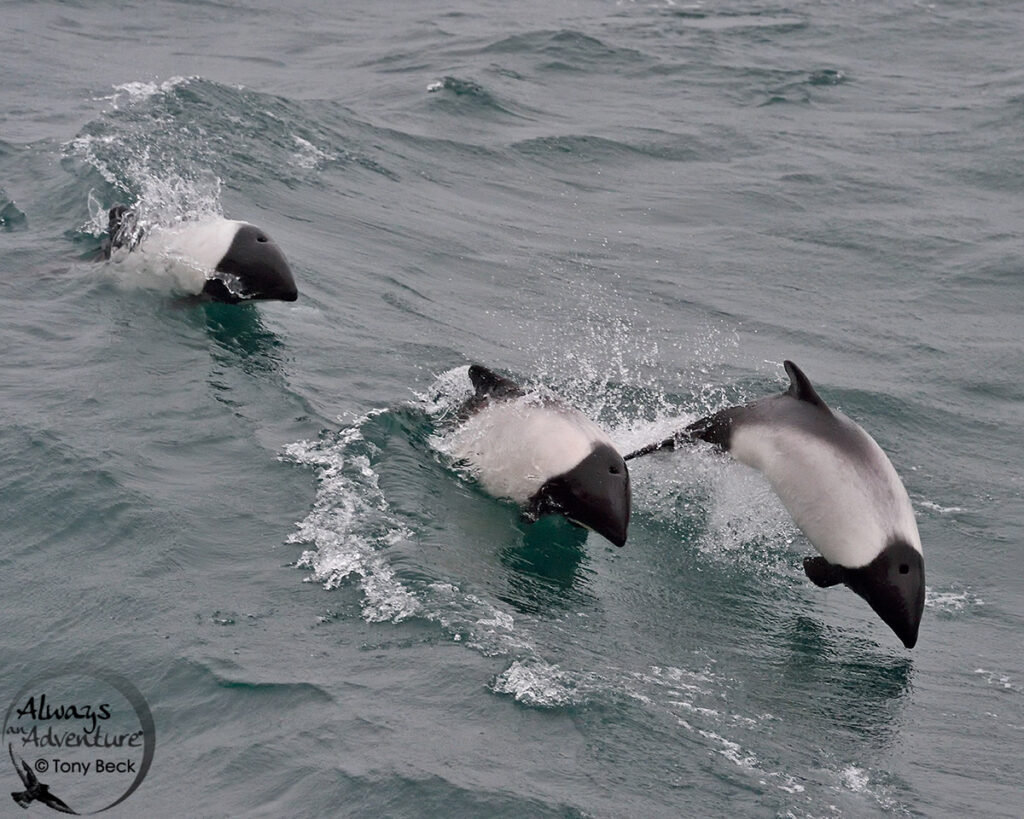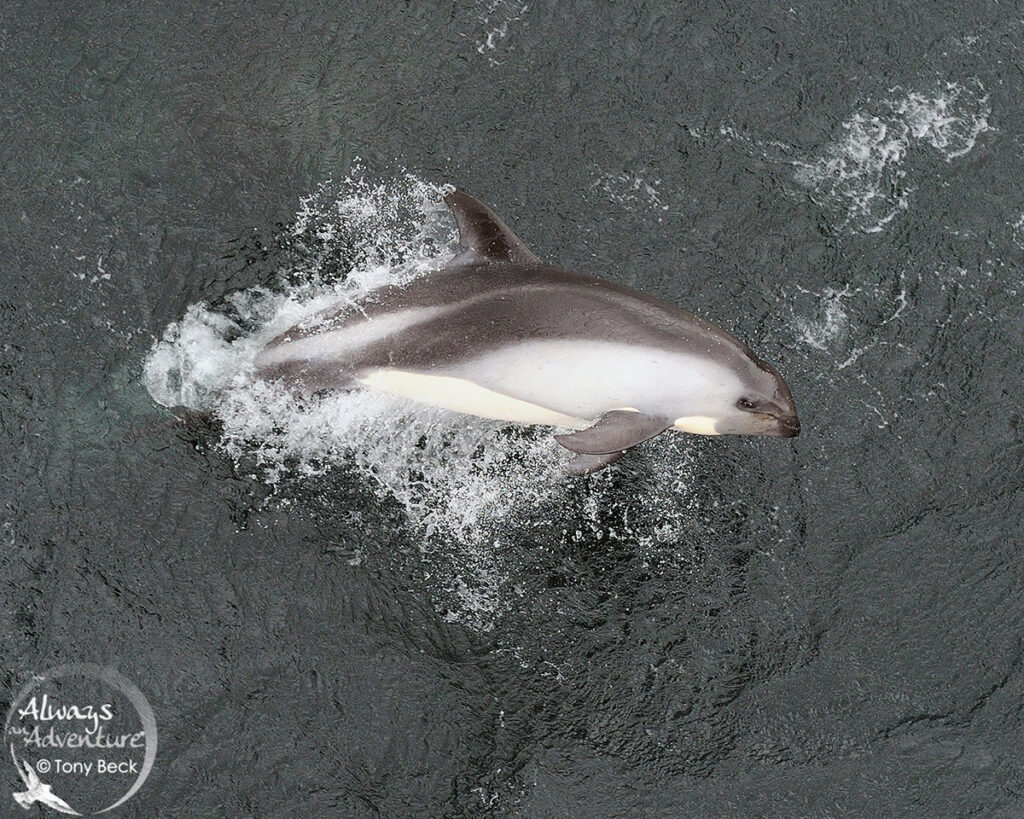Adult male Orca – With their tall dorsal fin, male Orcas are easy to separate from their female counterparts. Orcas, also known as Killer Whales, are the largest member of the Dolphin family.
Canadians understand the art of adapting to winter. It’s really simple – just go on vacation. Although most Canadian travellers enjoy tropical regions during our cold months, some of us look to escape into remote areas with limited access. One such adventure is an expedition to Antarctica. The most productive time to visit is during our winter – the Austral Summer. That’s when the southern hemisphere is hottest.
Adult female with calf – Smaller Orca calves are frequently found accompanying parents swimming in pods. Orcas from this region typically have an amber colouration. This is due to an abundance of diatoms (single-celled plankton) in Antarctic seawater.
Antarctic Fur Seal accompanying Orcas – Some Orcas in Antarctica specialize in hunting penguins. Some also hunt seals. However, sometimes fur seals can be seen swimming together in Orca pods with no sign of aggression or fear. This behaviour is not well understood.
Although the Antarctic region is still covered with much snow and ice, summer temperatures expose rocky shorelines that encourage wildlife breeding activity. Besides huge colonies of penguins, and an ocean full of food, many different types of seabirds & marine mammals thrive here. The best way to explore this remote area is with a ship of some sort. Having spent several seasons working on Expedition Cruises, I’ve enjoyed photographing most of the wildlife from this region. Among my favourite life forms are the whales.
Humpback tail fluke with Zodiac as backdrop – Polar Expeditions normally include Zodiac Cruises to observe wildlife. Calm conditions in sheltered bays make for ideal viewing conditions. Safety is always the priority, including that of the wildlife we’re observing. Zodiac drivers must obey industry regulations and provide ample space for wildlife to move freely.
Humpback Whale feeding frenzy with Kelp Gulls – In the food-rich waters of Antarctica, we often observe behaviours like cooperative bubble-net feeding. When the whales push krill to the surface, birds like these hungry Kelp Gulls will join the frenzy.
After breeding in warm equatorial regions, many species of whales migrate to the southern oceans to feed on an abundance of krill and other marine invertebrates. Imagine the thrill of a close encounter with these mysterious leviathans. The experience can be humbling and will forever etch into your memory.
Humpback breaching – From the upper deck of an Expedition Cruise ship, we sometimes enjoy dramatic scenes punctuated with wildlife including the occasional breaching whale.
Pod of Sei Whales – At about 15 metres in length, these large baleen whales swim like rockets. We occasionally find pods while crossing the Drake Passage.
Antarctic Minke Whale – At about 10 metres in length, the Antarctic Minke Whale is small compared to other baleen whales.
Gentoo Penguins concerned with nearby Minke – Although Minke Whales feed mainly on tiny prey like zooplankton, these Gentoo Penguins didn’t take any chances and avoided the whale by rapidly swimming away.
Commerson’s Dolphins – These uniquely patterned Dolphins are very friendly and usually ride the bow of our ship as we approach the Falkland Islands.
Peale’s Dolphin – These acrobatic creatures accompany our ship whenever we sail through the Beagle Channel on our way to Antarctica from Tierra del Fuego.
ABOUT THE AUTHOR
Tony Beck is an award-winning, Nikon Ambassador, Vortex Ambassador, and freelance photographer based in Ottawa.
He teaches birdwatching and nature photography courses.
Follow Tony’s adventures at www.AlwaysAnAdventure.ca



